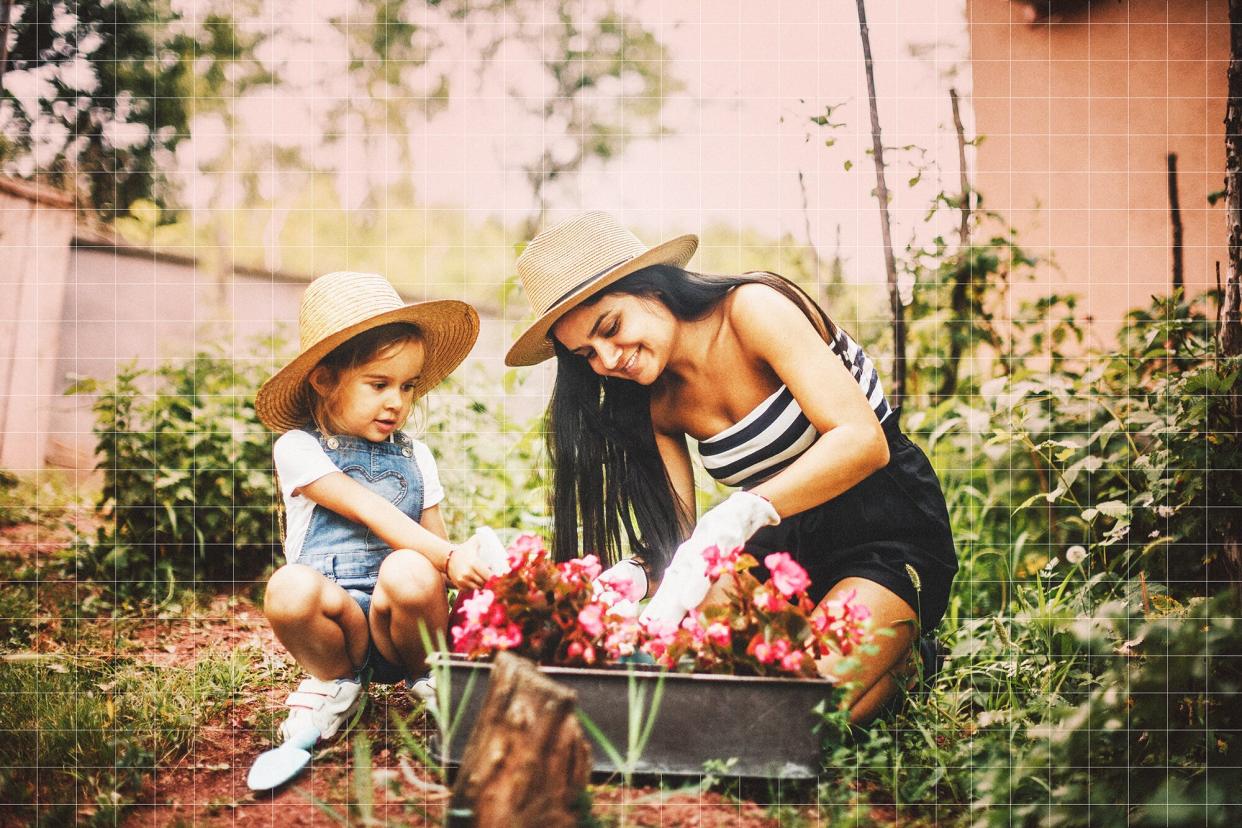6 Ways to Fertilize Your Garden Using Food Scraps

Getty Images / StefaNikolic
Welcome to Thrifty. A weekly column where associate nutrition editor and registered dietitian, Jessica Ball, keeps it real on how to grocery shop on a budget, make healthy meals for one or two and make earth-friendly choices without overhauling your entire life.
I love to garden. As the colder days drag on, I'm often dreaming of my thriving summer plot in my local community garden space. Not only is gardening an incredibly rewarding hobby, but also it can have a beneficial impact on your health. Spending time in the dirt can help you rack up more physical activity while also lowering stress, protecting against dementia, fighting heart disease and more. Not to mention, when all is said and done, you have delicious, fresh produce at your fingertips.
However, it is no secret that gardening can get expensive fast, especially if you're just starting out. First, you need to get seedlings or seeds, then supplies, dirt, compost and tools. It can add up before you know it. But there are several ways to cut down costs if you're on a budget. One way to save money is by using food scraps as fertilizers for your garden. There are several food scraps you can put to work even if you don't have a compost bin. Here's what to use and how to do it.
Related: The #1 Way to Save Money on Your Veggie Garden
1. Eggshells
Making an omelet or baking a cake? Don't throw away those eggshells—they can be used in a variety of ways in your garden. If you have a mostly intact eggshell, you can use it as a biodegradable seed-starter "pot." Gently fill it with dirt and a seed of your choice, then plant it in the ground once it's sprouted (bonus points if you use an old egg carton as a holder). Even if you don't use them to start seedlings, cracked-up eggshells can be added directly to your garden to give the soil a calcium boost. This is especially helpful for tomato and pepper plants, as it can help combat blossom-end rot. The sharp edges of the shells can also deter some snails and slugs.
2. Coffee Grounds
If you're one of the many people who start their day with a hot cup of coffee, you have ample fertilizer at the ready. Coffee grounds can be added almost like a mulch around the plants in your garden. The grounds are rich in nitrogen, which can help plants thrive, and grounds can also help aerate the soil, improving drainage. Grounds can be added to houseplants as well, but they do have a strong aroma that can be off-putting over time. To help moderate the smell, mix the grounds with water and pour the mixture around the plants, or work the grounds into and underneath the soil.
3. Banana Peels
Bananas are the gift that keeps on giving if you have a garden. The peels can add nitrogen, potassium, phosphorus, calcium and magnesium to the soil, making them a potent fertilizer. They can also help repel pesky pests like aphids. There are several ways to use banana peels in the garden. You can place them directly around plants, you can dry them and grind them up, or you can cut them up and bury them 1 to 2 inches below the soil.
4. Orange Peels
Not only do citrus peels smell amazing, but they can give nutritive value and pest protection to your garden, too. Orange peels are rich in potassium, nitrogen, calcium and magnesium that can help your plants grow. Citrus peels also contain the compound d-limonene, which has been found to deter pests like aphids. You can place the peels in the soil around plants as well as place torn peels on the branches of aphid-infested plants.
5. Nuts
Nuts are one of the healthiest foods to snack on, and their shells don't need to go to waste if you have a garden. Broken nut or seed shells can be placed around plants as a thick, nutrient-rich mulch. They'll provide a protective barrier to slow weeds from popping up and can help aerate the soil. Just be sure to rinse off any salt or seasoning from the shells before crushing them up and sprinkling them onto the soil.
6. Cooking Water
Boil or steam some vegetables? Don't dump the water down the drain; you can actually use it to water the plants in your garden (or in your home). When you boil foods, some of their nutrients leach into the water. Nutrient-rich foods like vegetables can leave nitrogen, potassium, calcium, magnesium and more in your cooking water. Using this to water your plants in your garden is a two-for-one: your plants get the hydration they need, plus some nourishment. And it gives a use to water that would be otherwise wasted.

